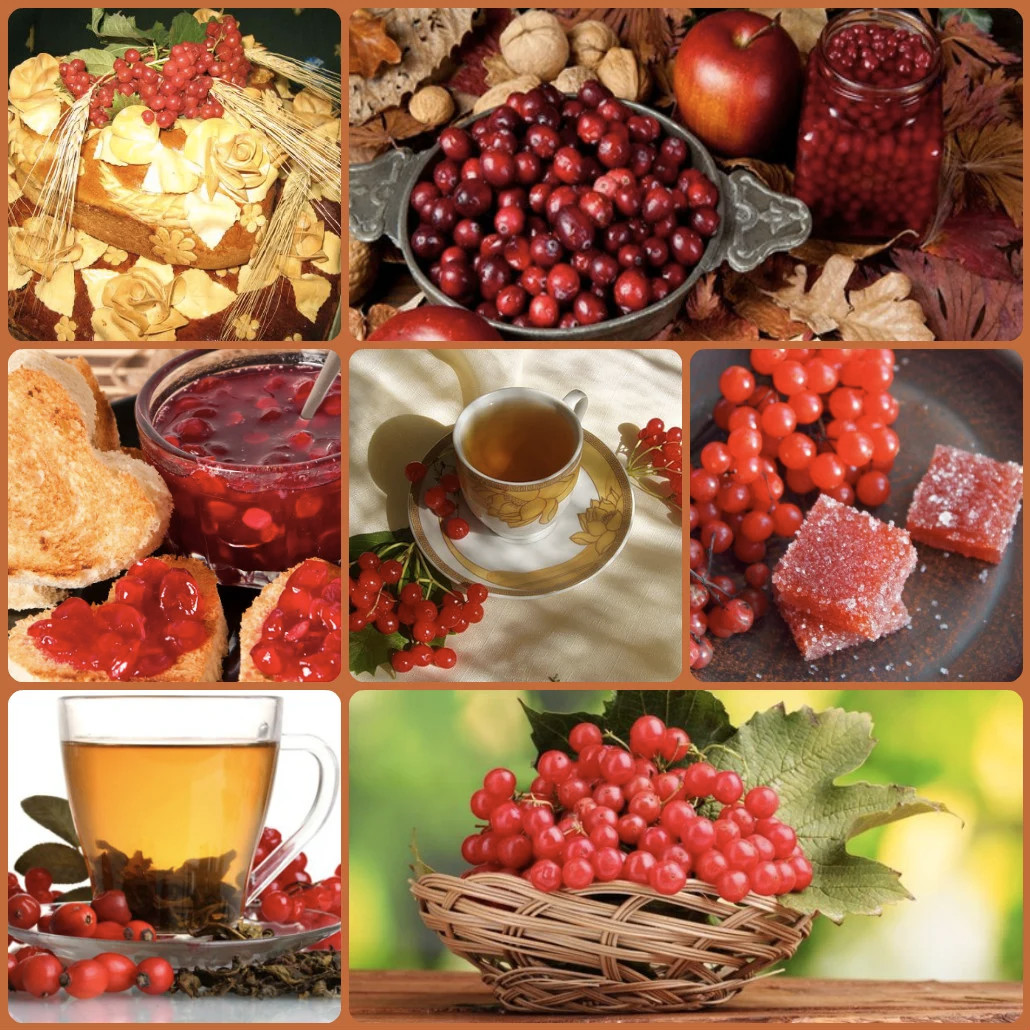Viburnum among the ancient Slavs was associated with virginity, as well as with blood due to bright red berries. Among the Ukrainians, it was a symbol of beauty, purity and procreation (“viburnum gave birth to a family”).
ꏍ
In Ukraine, during the first bathing of a girl, viburnum berries and leaves were put in the water so that she will grow up beautiful, happy and healthy. Viburnum was also put next to the woman in labor, so that she and the child were healthy and happy. And the midwife, washing the face and hands of the woman in labor, wished her to be “as beautiful [‘red’ in archaic language form], as viburnum”.
ꏍ
In northern Bulgaria, the midwife on the Sunday before Babin day (January 8) walked around the houses, where she helped to deliver babies, and applied mashed viburnum berries on the foreheads of women and children. Then she invited them to her place and blessed them: “Be red like viburnum, and buzz like a bee”.
ꏍ
Our ancestors were not mistaken with the health benefits of viburnum berries, which is now confirmed by science. What recipes based on this plant do you know?
ꏍ
To be continued…
ꏍ

